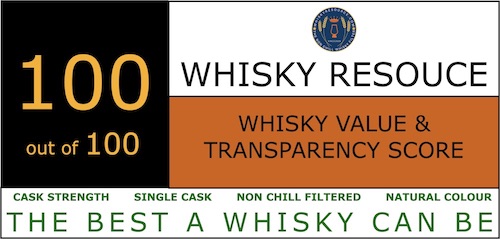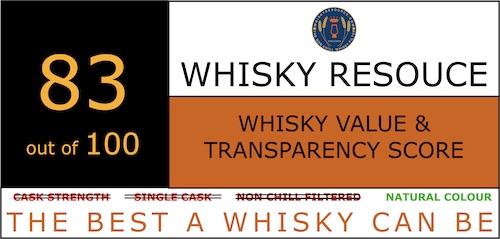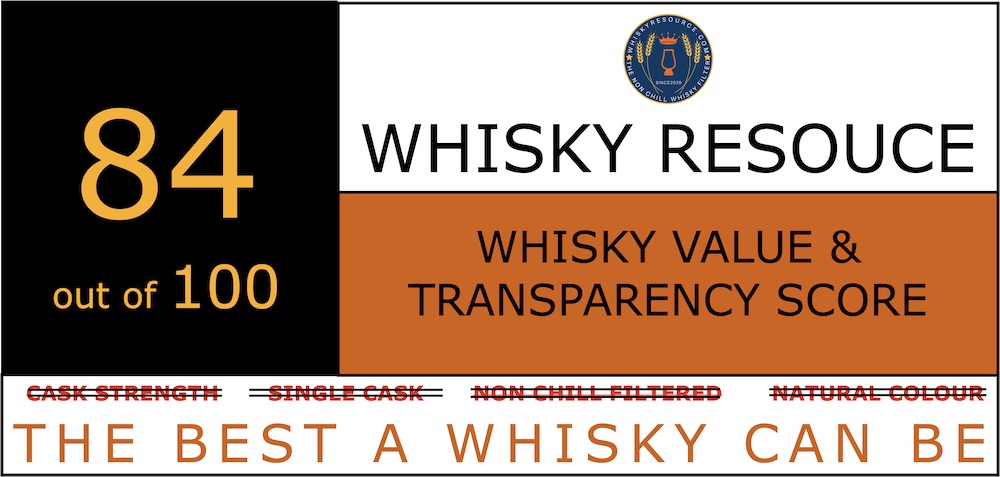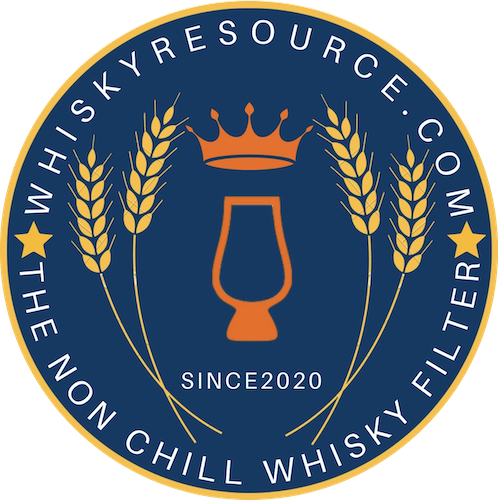Reviewing & Scoring Whisky
How the Whisky Value & Transparency Score (WVTS) came to be

Click each heading below to expand the text:
There are many whisky reviewers.
They can be found on Twitter, Instagram, Facebook and YouTube.
Some have their own blog.
On the 'Whisky Menu' displayed on the horizontal menu at the top of the page and listed under 'Whisky Blog Sites' we have published some of our favourite whisk(e)y reviewers who have a blog.
Most, not all of course, reviewers will score a whisky according to their own tastes, this is usually a number, some like Stuart (Whisky Whims) has a binary score system with either a "Win or a Bin", others score out of 5, a fair few out of 10 and then the remainder out of 100.
When I was conceptualising my whisky review channel and website, I wanted to do something different, something unique.
I wanted to give my own rating to a whisky, I considered out of 10, however, I didn't want to give decimal places, which, you could always run the risk of doing, you have two whiskies which are so similar, you previously gave one of them an 8, the second one is better than the 8, but its not quite a 9, but you want to score it better than the 8, so you give it 8.1... before you know it, you are looking at 8.15, 8.2 etc.
For a while and you will see this on my YouTube reviews, I decided to score out of 100.
However I was never happy with scoring a whisky. You see when reviewing whisky, there are many factors to consider:
Is it a new bottle and are you reviewing the first pour?
Or is the bottle down to the label? or past halfway?
Is it a sample? and was the sample the first pour or last pour, how long was the bottle open before a sample was taken.
When did you last eat? and what did you have?
what is your emotional state? what is your mood like? are you tired?
I could go on.
Many whisky enthusiasts will agree a whisky can change, even within minutes of pouring it into the glass, some take moments, others longer. Some whiskies will start to change once the bottle is open. YOU even change.
Each of these factors mean that how you score a whisky could be different to how you would have scored it yesterday or in a years time.
Whisky scoring is very subjective, it is a score based on your own palate and your preferences in that moment.
But because it is subjective, it will mean some people will agree with you and others will disagree often with some passion.
So as I was saying, before I started to waffle, I wanted something unique, a way for a whisky to be scored and have all subjectivity removed, a way to look at a whisky and its key attributes. To have a score which would work for all whisky using the same fact based calculation with no subjectivity.
So I devised a value score, based out of 100, it takes the key whisky facts.
What the score cannot tell you is if the whisky is any good, as I state, this is very subjective and depends on an individuals taste, as such, it is important to take several reviewers points of view into account, before making up your mind about buying a whisky.
The Value Score looks at the following (Published Statements)
- The Price of a whisky
- The Age
- The ABV (Alcohol by volume)
- Chill Filtration - Has it been chill filtered or not
- Natural Colour - Is it natural colour or been adjusted
- Cask Strength*- Is is cask strength or not
- Single Cask* - Is the whisky single cask or not
The calculation begins with the score maximum of 100.
100 is our ceiling value, while it is possible for a whisky to score above 100, this is very rare and with whisky pricing increasing over recent times, more unlikely.
Example calculation based on a whisky which is:
£50
10 Year Old
43% ABV
Chill Filtered
Colour Adjusted
We look at the price and calculate the price per year (Age).
So a 10 year old whisky costing £50 would be calculated as 50/10 = 5
We subtract 5 (calculated above) from the starting 100 so 100-5 = 95
Next we look at the ABV, since a whisky is typically non chill filtered at 46% or above, we use 46% as the base point, for every % ABV below we deduct a point and for every % above to a max of 50% we give a point.
With our example whisky it is 43%, so we deduct 3 points 95-3 = 92
Next we look at chill filtration, this is a YES/NO/UNKNOWN answer
Yes we deduct 6 points
No looses no points
Unknown we deduct 6 points (We like transparency and push distilleries to be open)
In the example the whisky IS chill filtered and also colour adjusted.
So we take 92 from the previous calculation above and deduct a further 6 therefore
92-6 = 86
Finally we look at colour, since this one is coloured we remove another 2 points - While colour isn't necessarily a bad thing, there are some people who believe they can taste the caramel colour, and while rare, there are some people who are intolerant (Alergic) to caramel colour - In the UK there is no legal requirement to state the whisky has been coloured - It is an accepted process that allows distilleries to keep batches of whisky consistent, having the same colour profile assists with this. But we think it is unnecessary.
So 86-2 = 84
The value score is 84
Another example,
£50
10 Year Old
48% ABV
Non Chill Filtered
Natural Colour
The Calculation would be
50/10 = 5 (Cost per year)
100 - 5 = 95
95 + 2 = 97 (2 added for an ABV above 46%)
97-0 (No adjustment for Chill Filtration as it HASN'T been filtered)
97-0 (No Adjustment for Colour as it is natural with no added Caramel)
Final Score 97.
When we compare the two whiskies, they are at the same price, same age, one is naturally presented but is 5% ABV higher. However the former scores 84 points and the latter 97 points.
The better presented whisky is better value and the score reflects this.
FINALLY
We give an additional point if it is cask strength and an additional point if it is Single Cask.
In the example of the second bottle, if this were the case it would have scored 99 points as it is a completely naturally presented whisky exactly as it came from the cask with no adjustments made.
A whisky can achieve a value score of 100 for this to be achieved the whisky needs to be bottled above 50% ABV, have a price per year of less than £6 and be completely naturally presented.
It does happen, however, it is very unusual.
Should you wish to see the whiskies in the database which have a value score of 100, you will need to subscribe as a member, you can then use 'The Non Chill Whisky Filter Plus +' to access the value score tool.
*Cask Strength - This includes batch strength.
*Single Cask - We use the Scotch Whisky Association (SWA) definition which includes the final or finishing cask definition for a whisky qualifying as Single Cask.
Should all of this leave you confused, then using magic and some programming skills, I have added a Value Score Calculator to the site, you can access it here (link new window)
To make the value score quick and easy with an at a glance summary, I have created a series of scoring cards.
Each card which is an image will display the whiskies value score together with the 4 key whisky attributes.
Where are attribute is achieved it will appear Green and where it is failed it will be Red and crossed through.
Examples;

This whisky has a price per year of £6 or less, is naturally presented

This whisky while natural colour, has been chill filtered.

This whisky has no natural presentation.
Occasionally you will see a value score which is -1 or 0 or 101, this is an explanation of those
-1 (minus one) value score are whiskies that are not necessarily rare, they do not achieve all 4 (four) presentation attributes of Non Chill Filtered, Natural Colour, Single Cask and Cask Strength. Simply put, they are just very expensive and do not reflect value for money. An example would be a 25 Year Old Whisky that is bottled at 43% chill filtered, coloured but not single cask nor cask strength with a retail price of £2,225, the value score would be calculated as exactly 0 (zero), any whisky with a calculated score below 0.5 would be assigned the -1 (minus one) value score. The whisky could be any combination of the 4 whisky attributes to still achieve -1 value score, it is calculated on the individual whisky specifics.
0 (zero) value score are those whiskies which we either do not have a historical/current price or due to our error no value score has been assigned. We look to re-evaluate each whisky as we update the database listing.
101 Diamond (one hundred and one) value score whiskies are those which are very rare or limited. An example would be this whisky:
Glen Scotia 48 Year Old Single Malt Whisky
It is a very old and limited whisky, bottled with all 4 (four) key whisky attributes - non chill filtered, natural colour, cask strength and single cask, however since the price is prohibitively expensive, a value score between 1 and 100 cannot be assigned but it would be unfair to assign a -1 score due to its rarity and natural presentation.
This does not mean it is good value, since value cannot be assigned to such a whisky due to its rarity.
If you are interested, the calculated score would be -133.16 (minus one hundred & thirty three), at this level the information becomes meaningless and no longer serves any useful purpose.
Since the value score calculation is a constant, its score can be represented in a simple chart displaying the age of a whisky versus the price per year of a whisky which is naturally presented & both cask strength & single cask.
The downside of this calculation is, as a whisky becomes older, the price per year generally increases, finding a whisky that meets the condition for a score of 100 out of 100 while difficult, is not impossible, look to independent bottlers for great value whisky.
The idea is when you are shopping for a whisky that is naturally presented, you can compare the price to the reckoner and see what value score it achieves, hopefully being able to find better value whisky, note this doesn't mean the whisky will be better quality, its up to you to do further research and look at reviewers comments.

Value Score Reckoner (link to larger image in a new window)
To explain how the reckoner works, starting with the 100 value score column.
For it to achieve a value score of 100 the whisky needs to have a price per year of no more than £6,
multiplying the price per year by the age gives the maximum price for that whisky to achieve a value score of 100.
Example;
A 8 year old whisky is naturally presented at 60.2% ABV cask strength, single cask, non chill filtered and natural colour for it to hit a value score of exactly 100 it needs to be priced at no more than £48.
Example 2;
A 25 Year Old whisky is naturally presented at 50% ABV cask strength, single cask, non chill filtered and natural colour for it to hit a value score of exactly 100 it needs to be priced at no more than £150
They do exist, however will become rarer, take a look at this Glenburn Blended Malt from A D Rattray, while it is not stated to be single cask (as it is a blend), it is priced at £115, it is 25 year old, cask strength and naturally presented. Its value score is 100.4 out of 100, capped at 100.
Over time whisky goes up in price due to inflation, supply & demand etc.
As a result the value score for a whisky will drop, since the value score was originally conceived with 2020 prices, there will be less whiskies achieving 100.
For example, Glenfarclas 15 Year Old^, at the time of writing we have the average price as £53.71 with a value score of 91/100 (Price when the whisky was listed / may be updated by time you read this article).
The average price has now increased to £73.20. The whisky hasn't changed, just the price, based on the new price, its value score is now 89/100 a drop of 2 points. However, Glenfarclas is not alone in the sudden price increases. With the exception of a few brands, almost all whisky have had significant price rises.
I will be monitoring the % increase in bottle prices, once pricing appears to have stabilised, I will review the value score calculation with a view of incorporating an inflation factor based on prices as whisky gets older.
But for now it serves as a historical reference to how whisky prices have changed.
Finally, there is the thought that the value score should remain unchanged, after all, a whisky that was once £53.71 and considered reasonable value then, could now be considered poor value and that whisky buying choices need to be evaluated - I am very unlikely to buy Glenfarclas 15 Year Old again since I no longer consider it value for money no matter how much cheaper it may well be compared to its peers, the two unopened bottles that I have in my bottle archive will serve me quite happily for some time.
^ Glenfarclas do not state if the 15 Year Old is chill filtered, many reviewers consider it to be heavily barrier filtered without the chilling aspect, regardless of what post treatment the whisky has had, the value score is based on transparency, if there no official statement the score is marked accordingly, this is 6 points lost on its value score due to a lack of transparency.
